
Intex 28685E 47 Inch x 47 Inch Solar Review solar water heater – Oemiu
Intex 28685E Solar Mat Review: Harnessing the Sun for Pool Warmth
The allure of a warm, inviting pool on a sunny day is undeniable. However, maintaining that perfect temperature can often be a costly endeavor, involving significant energy consumption and hefty electricity bills. Enter the Intex 28685E 47 Inch x 47 Inch Solar Mat, a seemingly simple yet potentially effective solution for passively heating your above-ground pool using the power of the sun. But does this solar water heater live up to the hype? This review delves into the details, exploring its design, functionality, performance, and overall value to help you decide if it’s the right choice for your pool-heating needs.
Understanding Solar Pool Heating and the Intex Approach
Solar pool heating, in its essence, is a straightforward concept: using solar energy to raise the temperature of the water circulating through your pool. Traditional solar pool heating systems often involve complex installations with roof-mounted collectors and sophisticated plumbing. The Intex 28685E, however, offers a more accessible and simplified approach, designed for ease of use and affordability, especially for smaller above-ground pools. It functions as a passive solar collector, relying on the pool’s existing filtration system to circulate water through the mat, which then absorbs heat from the sun and returns the warmed water to the pool.
The design is deceptively simple. The 47-inch by 47-inch mat is constructed from a durable, UV-resistant material designed to withstand prolonged exposure to sunlight and pool chemicals. The black color maximizes solar absorption, efficiently capturing and transferring heat to the water flowing through its internal channels. Connecting the mat to your existing pool filtration system is typically a straightforward process, involving connecting hoses (often sold separately) to the mat’s inlet and outlet ports. Depending on the size of your pool, you might need to connect multiple mats in series to achieve the desired heating effect. The Intex 28685E, being a low-cost alternative to electric heat pumps or gas heaters, targets the budget-conscious pool owner seeking a greener and more economical way to extend their swimming season. It avoids complex installations and expensive maintenance, making it a practical option for those new to solar heating or looking for a supplemental heating solution. The popularity of solar water heater systems is growing, and compact solutions like the Intex 28685E are contributing to that trend by making the technology more accessible.
When considering this type of solar water heater, it’s crucial to manage expectations. It won’t provide the rapid temperature increases of a gas heater nor the consistent heat of an electric heat pump. Its effectiveness hinges on factors like sunlight intensity, ambient temperature, pool size, and the number of mats used. However, for those willing to embrace a more gradual and environmentally friendly approach to pool heating, the Intex 28685E can be a worthwhile investment.
Detailed Design and Technical Specifications
A close examination of the Intex 28685E reveals thoughtful design elements aimed at maximizing efficiency and durability. The mat’s surface is engineered to optimize solar absorption, typically featuring a grooved or textured pattern to increase the surface area exposed to sunlight. The black color is crucial for absorbing a broad spectrum of solar radiation, converting it into heat. The internal channels are designed to provide optimal water flow, minimizing resistance and maximizing heat transfer. The mat is usually constructed from a UV-resistant polyethylene material or similar polymer, chosen for its ability to withstand the harsh conditions of outdoor use, including prolonged exposure to sunlight, pool chemicals, and varying temperatures. The material is also typically resistant to cracking and fading, ensuring a longer lifespan for the product. However, it is always important to use winterizing products to prevent cracking in colder climates.
The connection points are designed to be compatible with standard pool hoses, usually 1.25-inch or 1.5-inch in diameter. Adapters may be included to accommodate different hose sizes, ensuring compatibility with a wide range of pool filtration systems. The mat’s compact size (47 inches by 47 inches) makes it easy to handle and position, even in smaller spaces. Its lightweight design also contributes to its portability and ease of storage when not in use. While the mat itself is relatively simple, it’s often recommended to use multiple mats connected in series to achieve a more significant temperature increase, especially for larger pools. This modular design allows for customization based on individual needs and pool size.
Beyond the mat itself, the installation process often involves additional components, such as hoses, clamps, and possibly a bypass valve. Hoses are needed to connect the mat to the pool’s filtration system, while clamps ensure a secure and leak-proof connection. A bypass valve allows you to control the flow of water through the mat, enabling you to regulate the heating process and prevent overheating on extremely sunny days. These additional components, though often sold separately, are essential for ensuring the proper functioning and longevity of the solar mat system. Understanding the design and technical specifications of the Intex 28685E is crucial for making an informed purchase decision and ensuring its compatibility with your existing pool setup.
| Feature | Specification |
|---|---|
| Dimensions | 47 inches x 47 inches |
| Material | UV-resistant Polyethylene or similar |
| Color | Black |
| Connection Size | Compatible with 1.25-inch or 1.5-inch hoses (adapters may be required) |
| Weight | Typically under 10 lbs |
| Heating Capacity | Varies depending on sunlight, pool size, and number of mats |
Installation, Operation, and Performance Expectations
The relative ease of installation is a major selling point for the Intex 28685E. Unlike complex solar pool heating systems requiring professional installation, this solar water heater is designed for a do-it-yourself setup. The process typically involves connecting hoses to the mat’s inlet and outlet ports and then connecting these hoses to the pool’s filtration system. It’s crucial to ensure a secure and leak-proof connection using clamps or other suitable fasteners. Depending on the pool’s plumbing configuration, you might need to use adapters to accommodate different hose sizes. The positioning of the mat is also important for maximizing solar absorption. Ideally, the mat should be placed in a sunny location, preferably on a flat surface, with minimal shading throughout the day. Angling the mat towards the sun can further enhance its performance, although this may require additional support or adjustments.
Once installed, the operation is relatively simple. The pool’s filtration system circulates water through the mat, which absorbs heat from the sun and returns the warmed water to the pool. The effectiveness of the mat depends on several factors, including sunlight intensity, ambient temperature, pool size, and the number of mats used. On a sunny day, you can expect to see a noticeable temperature increase, typically ranging from 3 to 5 degrees Fahrenheit. However, the actual temperature increase can vary depending on the specific conditions. For larger pools, using multiple mats connected in series is often necessary to achieve the desired heating effect. A bypass valve can be used to regulate the flow of water through the mat, preventing overheating on extremely sunny days or allowing you to bypass the mat altogether when heating is not required. It’s important to monitor the pool’s temperature regularly and adjust the flow rate accordingly to optimize performance.
Managing expectations is crucial when evaluating the performance of the Intex 28685E. It’s not a high-powered heating system that can quickly raise the pool’s temperature. Instead, it’s a passive solar collector that provides a gradual and sustainable source of heat. Its effectiveness is limited by sunlight availability and ambient temperature. However, for those seeking a cost-effective and environmentally friendly way to extend their swimming season, the Intex 28685E can be a worthwhile investment. With proper installation, operation, and realistic expectations, it can provide a noticeable and enjoyable increase in pool temperature, allowing you to enjoy your pool for a longer period each year. The efficiency of your solar pool water heater is dependant on getting the right size mat for your pool.
Pros, Cons, and Considerations for Potential Buyers
Like any product, the Intex 28685E solar water heater has its strengths and weaknesses. Understanding these pros and cons is essential for making an informed purchase decision. Let’s begin with the advantages:
- Affordability: One of the most significant benefits of the Intex 28685E is its low cost. Compared to electric heat pumps or gas heaters, it’s a much more budget-friendly option for heating your pool.
- Ease of Installation: The DIY-friendly design makes it easy to install without the need for professional assistance.
- Environmentally Friendly: By harnessing solar energy, it reduces your reliance on fossil fuels and lowers your carbon footprint.
- Simple Operation: The passive solar collection process requires minimal maintenance and monitoring.
- Portability and Storage: Its lightweight and compact design makes it easy to move and store when not in use.
However, it’s important to acknowledge the limitations:
- Limited Heating Capacity: The heating performance is dependent on sunlight intensity and ambient temperature, making it less effective on cloudy days or during colder periods.
- Slow Heating Process: It provides a gradual temperature increase, which may not be sufficient for those seeking a rapid heating solution.
- Requires Additional Components: Hoses, clamps, and a bypass valve are often sold separately and are necessary for proper installation and operation.
- Pool Size Limitations: It’s best suited for smaller above-ground pools, as larger pools may require multiple mats to achieve the desired heating effect.
- Durability Concerns: While the material is UV-resistant, its long-term durability may be a concern in extremely harsh climates.
Before purchasing the Intex 28685E, consider the following factors: Your pool size is critical in determining the number of mats needed. Smaller pools will require fewer mats to heat adequately. Assess the amount of sunlight your pool area receives. Optimal performance requires ample sunlight throughout the day. Evaluate your budget and compare the cost of the Intex 28685E with other pool heating options. Consider your climate and heating needs. If you live in a region with limited sunlight or require rapid heating, other options may be more suitable. Factor in the cost of additional components, such as hoses, clamps, and a bypass valve. Read online reviews and gather feedback from other users to get a better understanding of its performance and reliability. Keep in mind that the Intex 28685E is not a substitute for a high-performance heating system. It’s a supplemental heating solution designed to extend your swimming season and provide a more comfortable pool temperature at a relatively low cost.
Alternative Solar Pool Heating Options and Comparative Analysis
While the Intex 28685E offers a budget-friendly entry point into solar pool heating, it’s essential to be aware of alternative options available on the market. These alternatives range from more sophisticated solar mat systems to larger, roof-mounted solar collectors and even hybrid systems that combine solar heating with other technologies. Understanding the pros and cons of these alternatives can help you make a more informed decision based on your specific needs and budget. One common alternative is larger solar mats from other brands, often featuring thicker materials and more efficient designs. These mats typically offer a greater heating capacity per unit, but also come with a higher price tag. They may also require more robust plumbing connections and a more powerful filtration system.
Roof-mounted solar collectors represent a more advanced and permanent solution. These systems consist of multiple solar panels installed on your roof, connected to your pool’s plumbing system. They offer significantly higher heating capacity compared to solar mats and can effectively heat larger pools. However, they also require professional installation, which can be a significant expense. Additionally, roof-mounted systems may require permits and may not be suitable for all types of roofs. Another option is solar pool covers, which act as passive solar collectors by trapping heat from the sun and preventing heat loss from the pool. While they don’t actively circulate water, they can significantly reduce heating costs and extend your swimming season. Solar pool covers are a relatively inexpensive and easy-to-install option, but they require regular maintenance and may not be as effective as active solar heating systems.
Hybrid systems combine solar heating with other technologies, such as heat pumps or gas heaters. These systems allow you to supplement solar heating with other sources of heat when needed, ensuring a consistent pool temperature regardless of weather conditions. Hybrid systems offer the best of both worlds, combining the cost savings of solar heating with the reliability of other heating technologies. However, they also come with a higher upfront cost and may require more complex installation. When comparing these alternatives, consider the following factors: Your budget, the heating capacity, the ease of installation, the maintenance requirements, and the overall long-term cost. The Intex 28685E is a suitable choice for those seeking an affordable and easy-to-install solar heating solution for small above-ground pools. However, if you have a larger pool or require a more powerful and reliable heating system, consider exploring the alternatives mentioned above. Ultimately, the best choice depends on your individual needs and circumstances.
| Option | Pros | Cons | Typical Cost |
|---|---|---|---|
| Intex 28685E Solar Mat | Affordable, Easy to install, Portable | Limited heating capacity, Slow heating | $30 – $50 |
| Larger Solar Mats (Other Brands) | Greater heating capacity, More durable | More expensive, May require stronger pump | $50 – $150 |
| Roof-Mounted Solar Collectors | High heating capacity, Long-lasting | Expensive, Professional installation required | $3,000 – $8,000 |
| Solar Pool Cover | Inexpensive, Easy to install, Reduces heat loss | Less effective than active heating, Requires maintenance | $50 – $200 |
FAQ: Frequently Asked Questions About the Intex 28685E Solar Mat
How many Intex 28685E solar mats do I need for my pool?
The number of mats required largely depends on the size of your pool. As a general guideline, for smaller above-ground pools (e.g., 10-12 feet in diameter), one or two mats might suffice. However, for larger pools (e.g., 15-18 feet in diameter or larger), you’ll likely need three or more mats to achieve a noticeable temperature increase. Keep in mind that other factors, such as sunlight exposure and desired temperature, also play a role. It’s always better to err on the side of using more mats rather than fewer, as you can always regulate the flow of water through them using a bypass valve. Consider starting with a few mats and adding more as needed to fine-tune the heating performance. You might also consult online forums or reviews to get recommendations from other pool owners with similar-sized pools.
Can I leave the solar mat connected all the time?
Yes, you can leave the solar mat connected to your pool’s filtration system all the time. However, it’s important to monitor the pool’s temperature and adjust the flow of water through the mat accordingly. On extremely sunny days, the mat can potentially overheat the water, which can be undesirable. In such cases, you can use a bypass valve to reduce or completely shut off the flow of water through the mat, allowing the water to circulate through the pool without being heated. Conversely, on cloudy days or during colder periods, you can maximize the flow of water through the mat to capture as much solar heat as possible. Regularly checking the pool’s temperature and adjusting the flow rate will help you optimize the mat’s performance and prevent overheating or underheating.
How much will the Intex solar water heater raise my pool temperature?
The temperature increase you can expect from the Intex 28685E solar mat varies depending on several factors. These include the intensity of sunlight, ambient temperature, pool size, and the number of mats you are using. In ideal conditions, with strong sunlight and warm weather, you might see a temperature increase of 3-5 degrees Fahrenheit per day. However, on cloudy days or during cooler periods, the temperature increase may be minimal or even negligible. Using multiple mats connected in series will generally result in a greater temperature increase compared to using a single mat. It’s important to manage your expectations and understand that the Intex 28685E is a passive solar collector that provides a gradual and sustainable source of heat, rather than a rapid heating solution. The size of the pool is also a factor, and bigger pools will see a smaller rise than smaller pools.
Is the Intex 28685E durable and long-lasting?
The Intex 28685E is constructed from a UV-resistant material designed to withstand prolonged exposure to sunlight and pool chemicals. However, its long-term durability depends on several factors, including the climate, usage patterns, and maintenance practices. In extremely harsh climates, with intense sunlight and extreme temperatures, the material may degrade more quickly. Proper maintenance, such as cleaning the mat regularly and storing it properly during the off-season, can help extend its lifespan. Avoid exposing the mat to sharp objects or abrasive surfaces, as this can damage the material. While the Intex 28685E is generally considered to be a durable product for its price point, it’s not as robust as more expensive solar heating systems. With proper care and maintenance, it can provide several seasons of reliable performance. Some owners also use a UV protectant spray to help keep the material from fading or cracking. Following product care instructions will help the solar water heater last.
What maintenance is required for the Intex solar mat?
Maintaining the Intex 28685E solar mat is relatively simple and straightforward. Regularly cleaning the mat is important to remove any debris, such as leaves, dirt, or algae, that may accumulate on its surface. You can use a soft brush or sponge and mild soap to clean the mat. Avoid using harsh chemicals or abrasive cleaners, as these can damage the material. Periodically inspect the mat for any signs of wear and tear, such as cracks, leaks, or fading. If you notice any damage, repair it promptly to prevent further deterioration. During the off-season, when the mat is not in use, store it in a cool, dry place away from direct sunlight and extreme temperatures. Before storing the mat, make sure it is completely dry to prevent mold or mildew from forming. Storing the mat properly will help extend its lifespan and ensure its optimal performance in subsequent seasons.
Can I use the Intex 28685E with a saltwater pool?
Yes, you can typically use the Intex 28685E solar mat with a saltwater pool. The materials used in its construction are generally resistant to the corrosive effects of salt. However, it’s important to rinse the mat thoroughly with fresh water after each use to remove any salt residue that may accumulate on its surface. Over time, prolonged exposure to salt can potentially degrade the material, so rinsing it regularly will help extend its lifespan. You should also inspect the mat more frequently for any signs of corrosion or damage. Using a saltwater-compatible sealant on the connection points can further protect them from corrosion. While the Intex 28685E is generally compatible with saltwater pools, proper maintenance and precautions are necessary to ensure its longevity.
What is the best way to position the Intex 28685E solar mat for optimal heating?
To maximize the heating efficiency of the Intex 28685E solar mat, positioning it correctly is crucial. The ideal location is a sunny spot with minimal shading throughout the day. Orient the mat so that it faces the sun directly, especially during the peak hours of sunlight. You can use a simple compass to determine the direction of the sun and adjust the mat’s position accordingly. Angling the mat slightly towards the sun can further enhance its performance, but this may require additional support or adjustments. A slight incline can increase the amount of solar radiation the mat absorbs. Make sure the mat is placed on a flat surface to ensure even water flow and prevent any damage. Experiment with different positions and angles to find the optimal setup for your specific pool and location. Monitoring the pool’s temperature and adjusting the mat’s position as needed will help you achieve the best possible heating results.
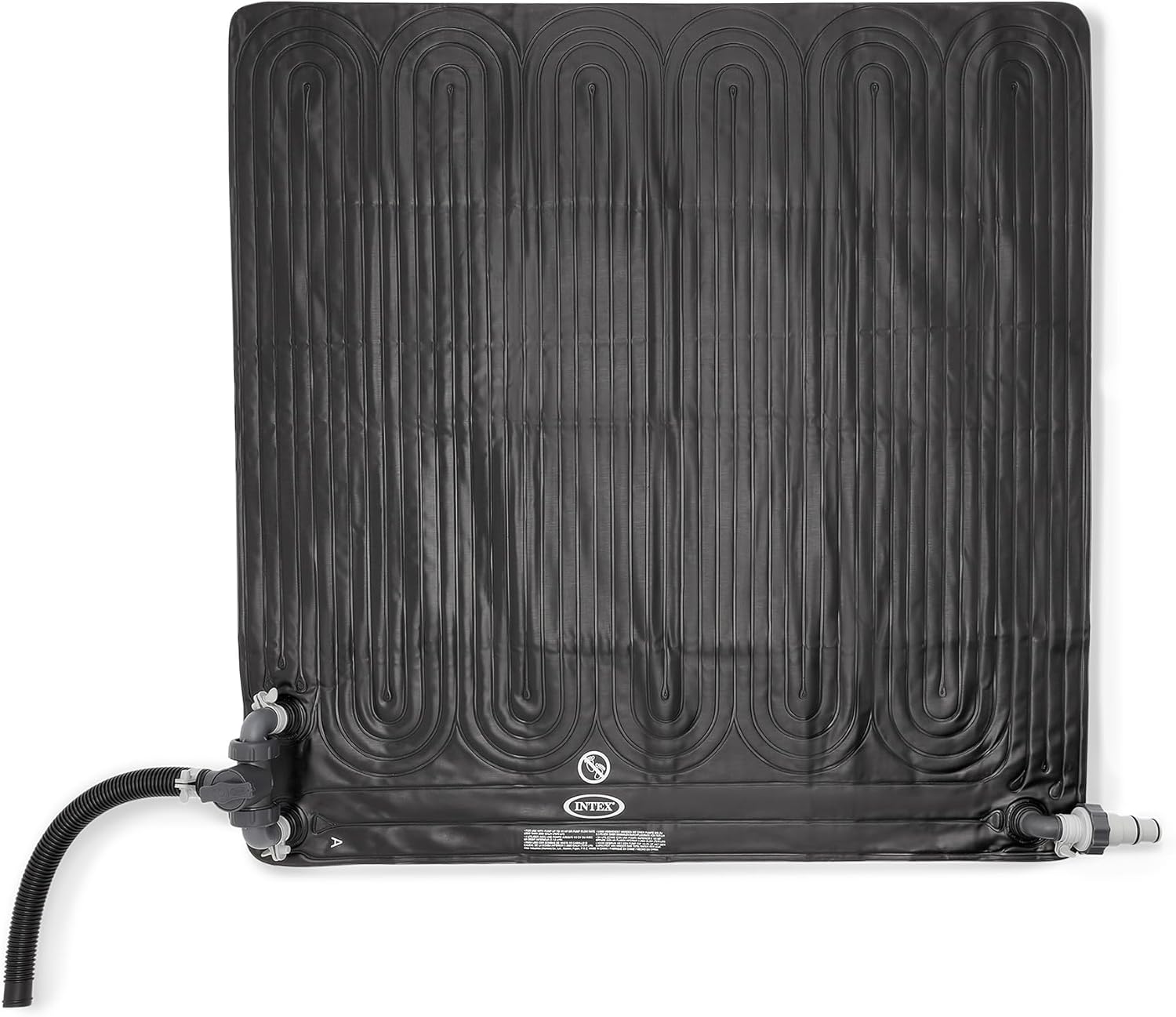
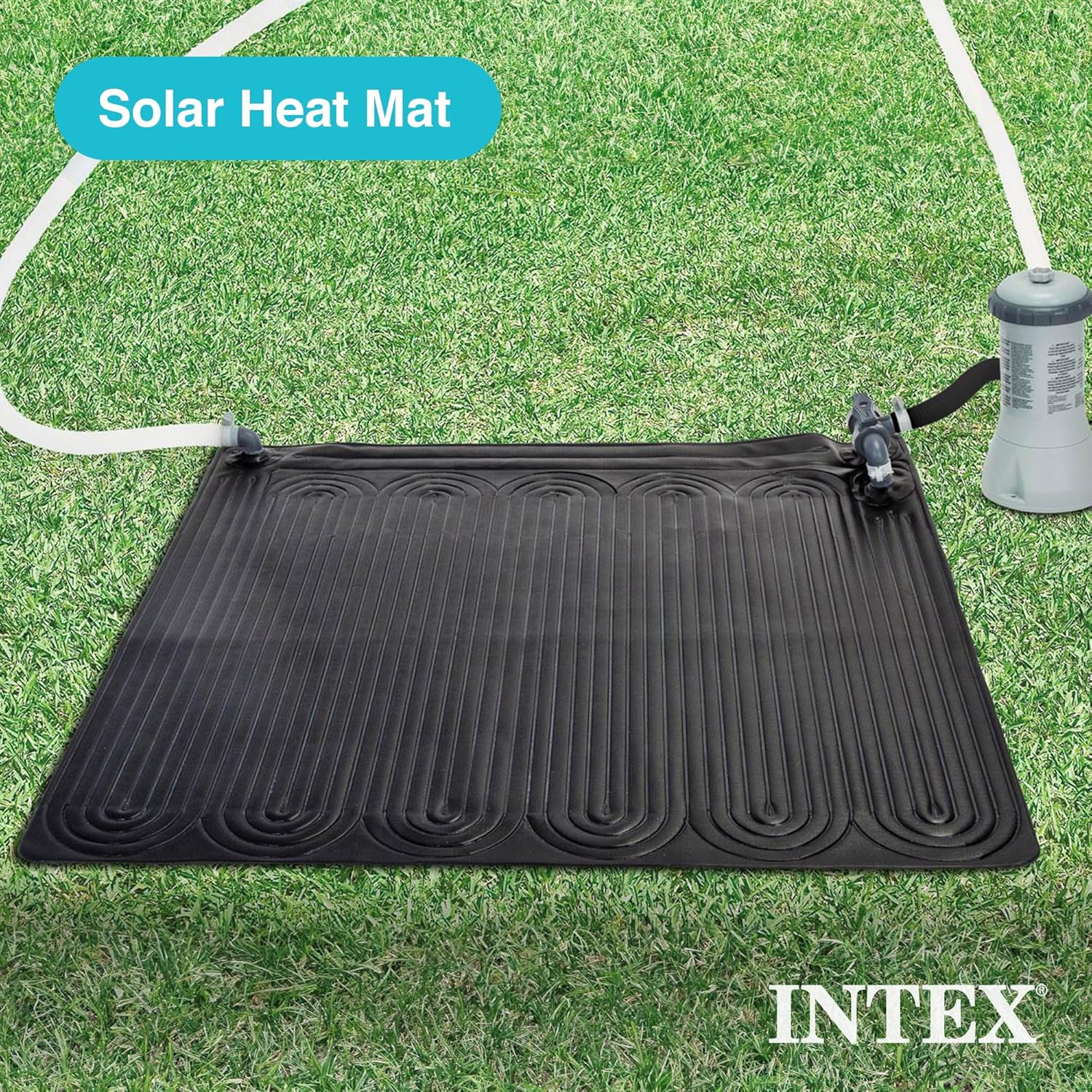
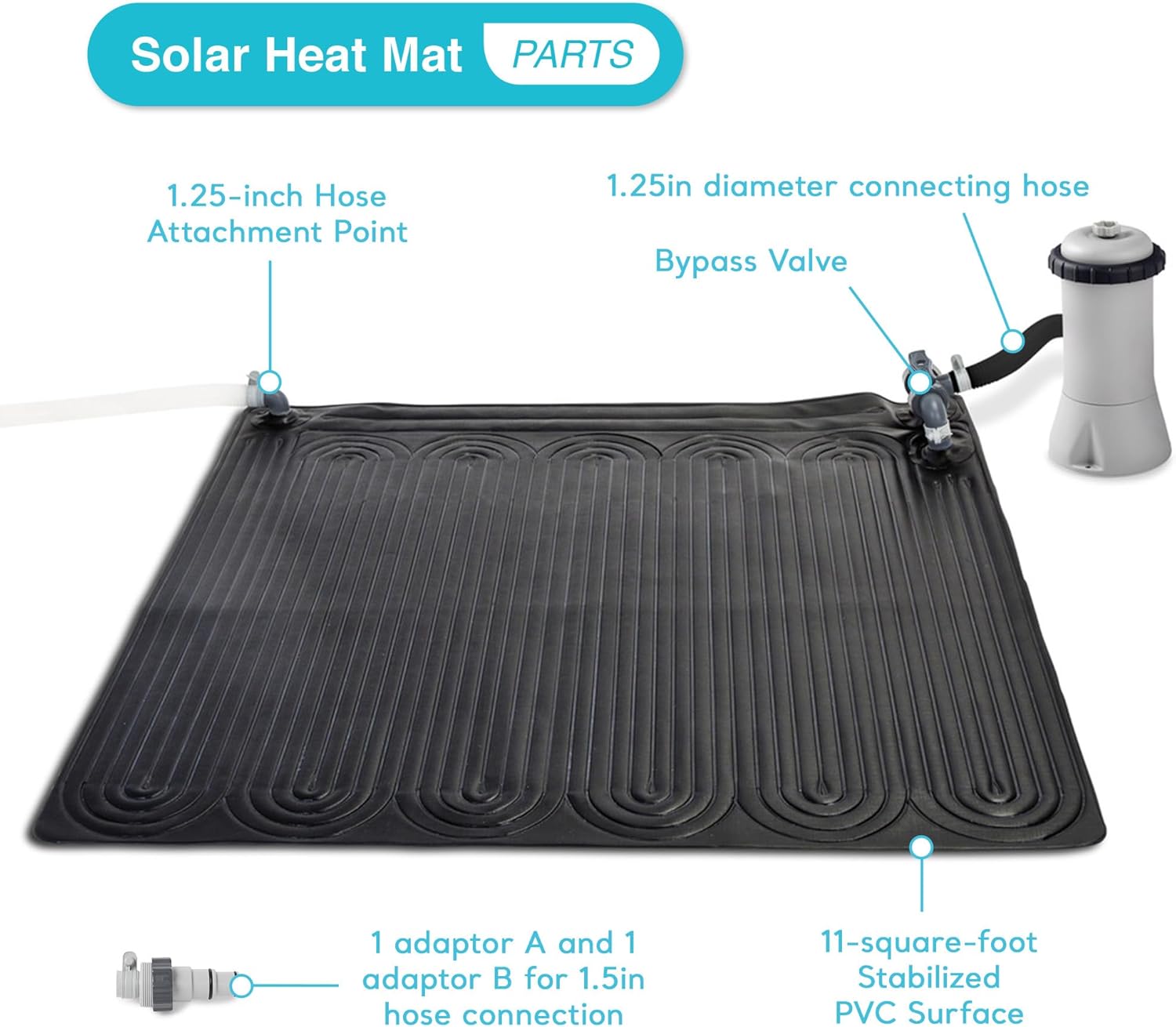
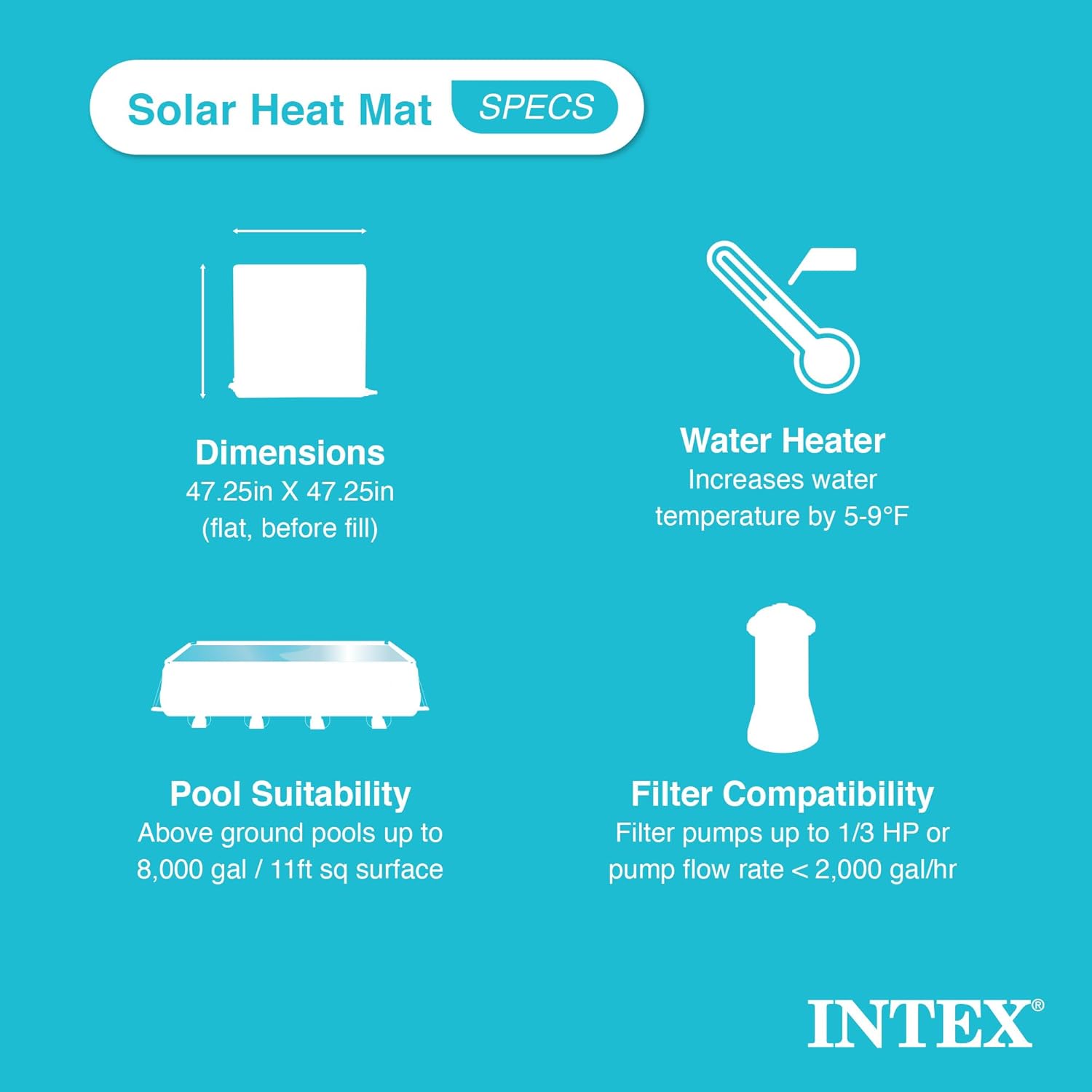

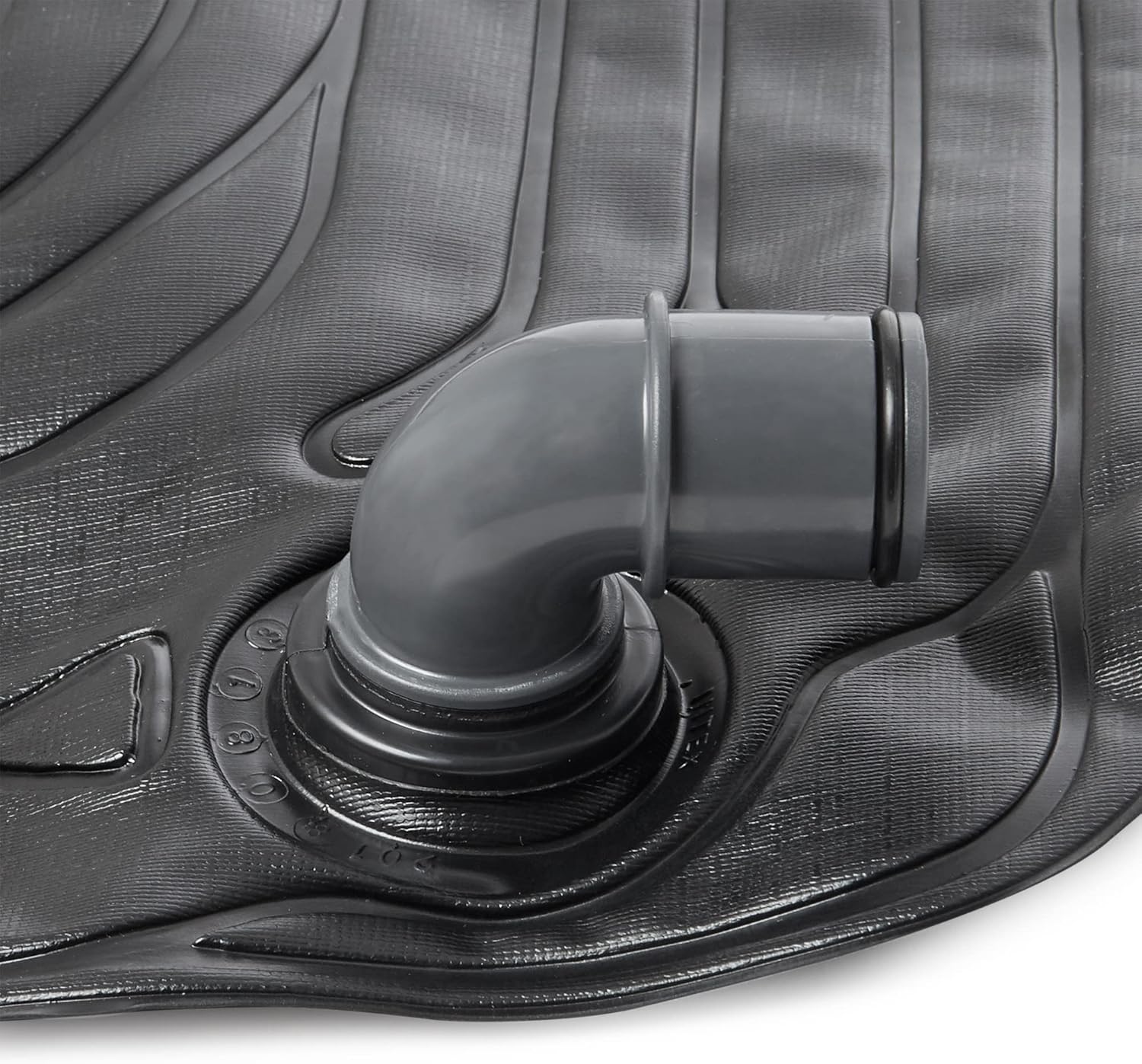
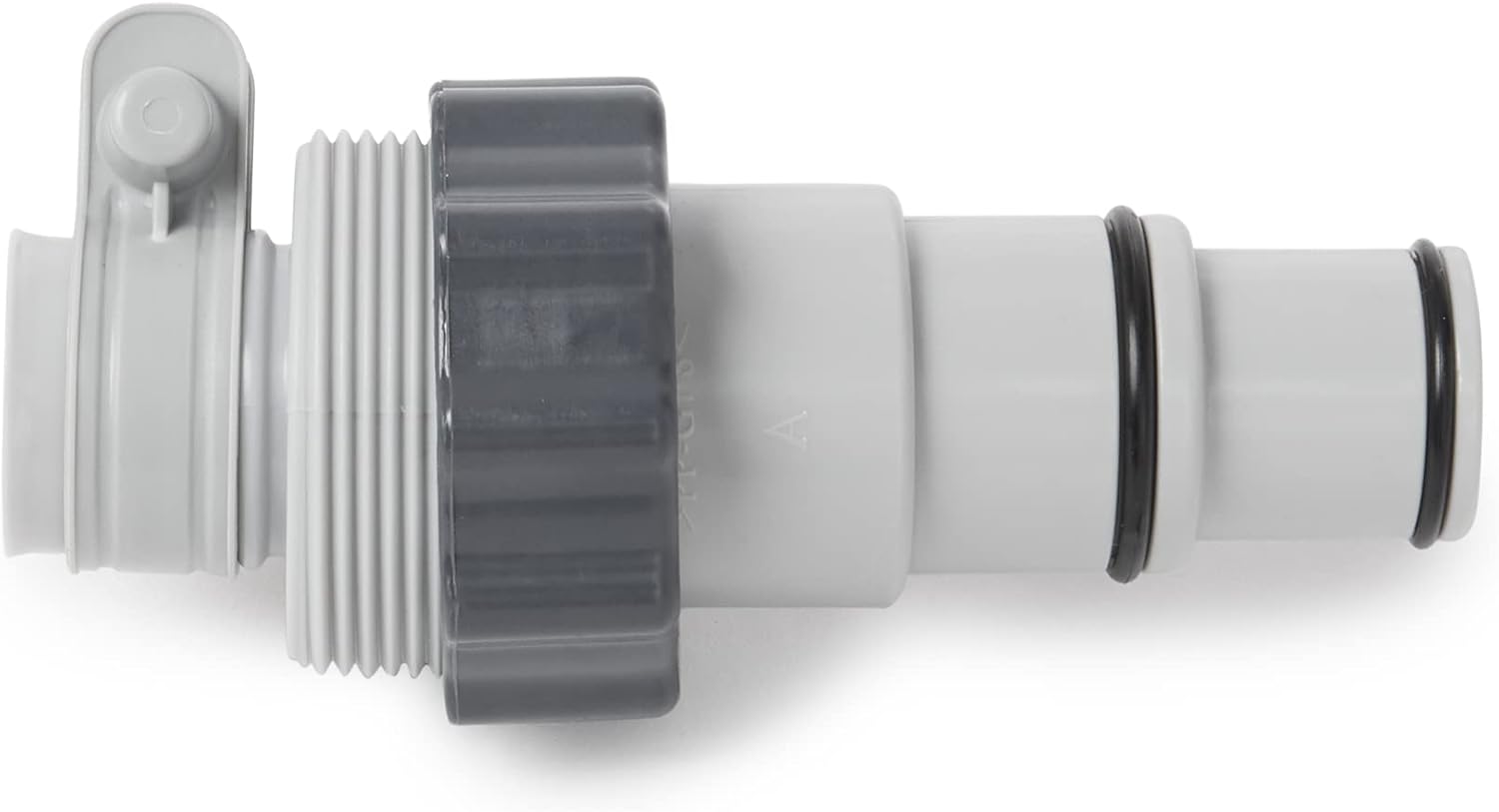
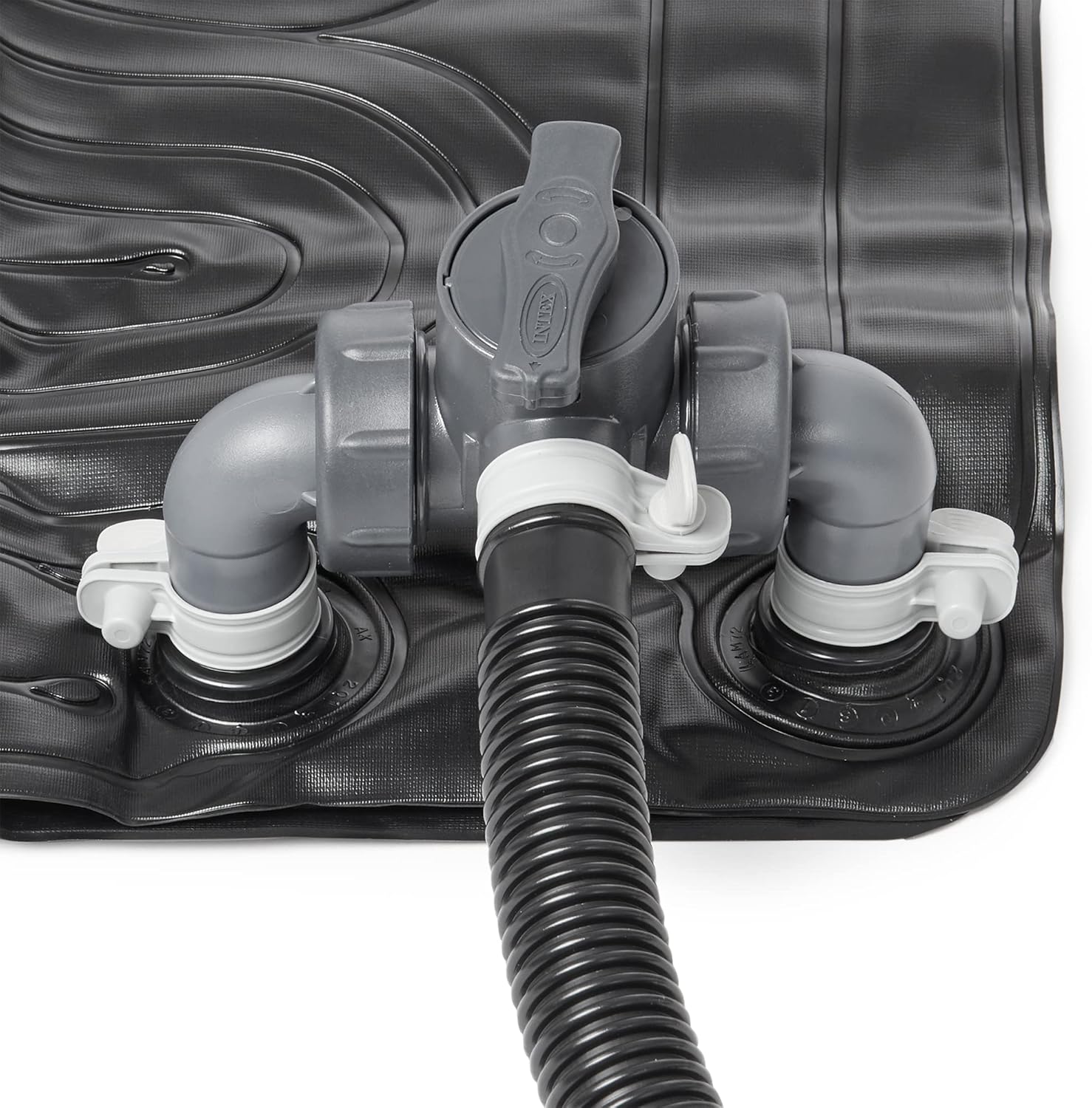
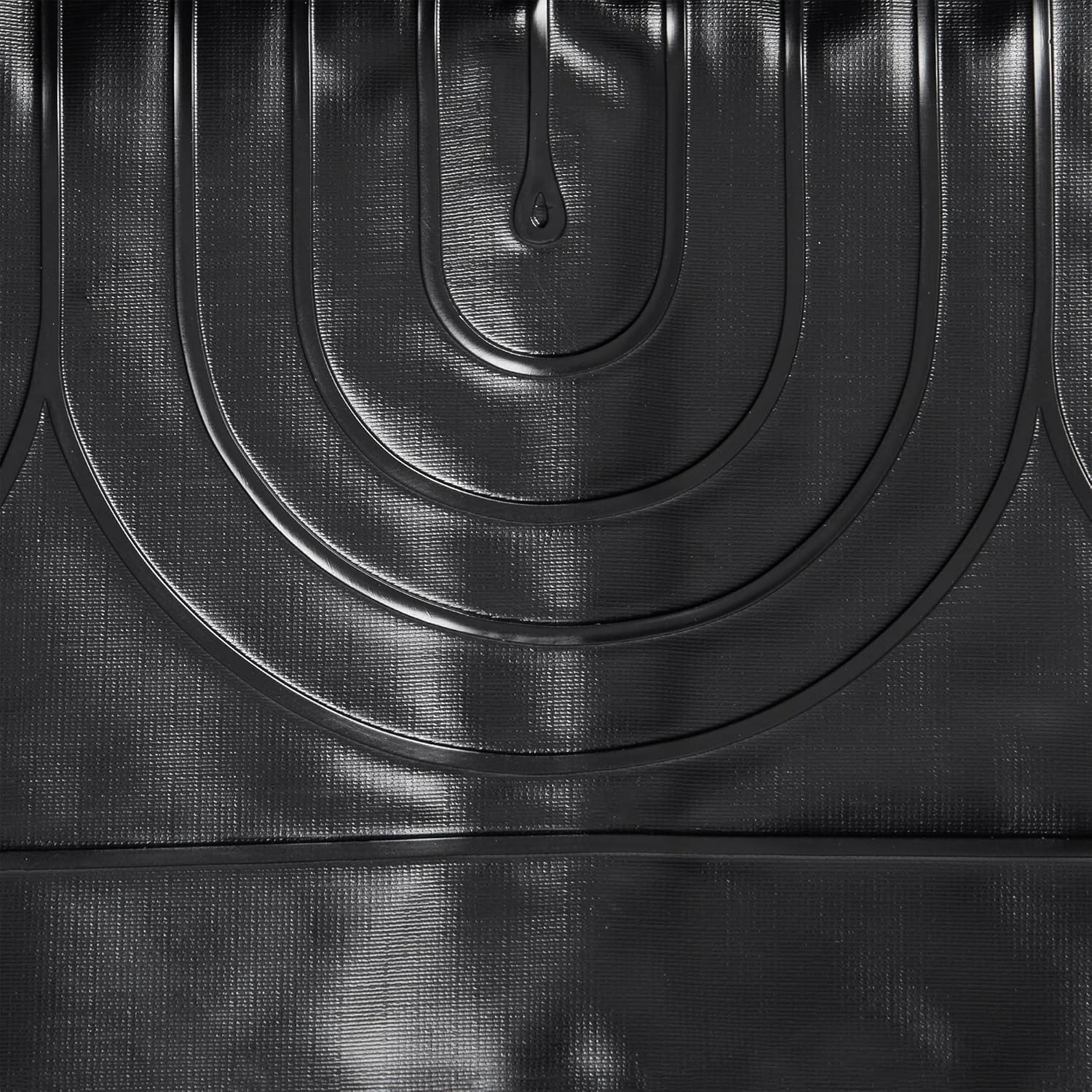
Price: $31.48 - $29.02
(as of Sep 04, 2025 12:09:34 UTC – Details)




